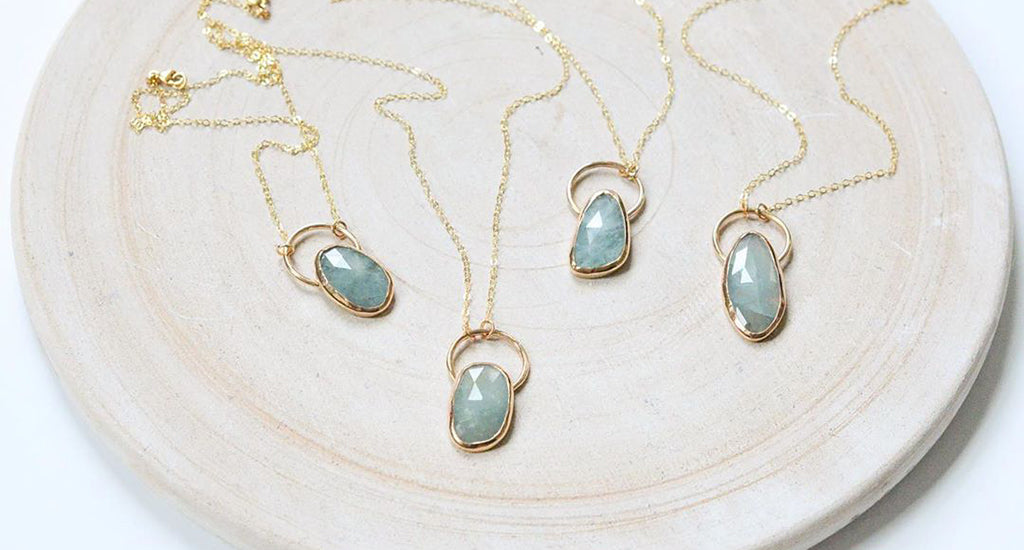Aquamarine - Birthstone Jewelry
 Aquamarine earrings, encased in a 14k gold-filled bezel setting.
Aquamarine earrings, encased in a 14k gold-filled bezel setting.
And now a break from global realities! Here’s a little something to enrich your knowledge bank of Aquamarine stones for the next time you pick one up.
We want to celebrate one of our favorite stones, and the birthstone of March, the Aquamarine! (And the non-existent crowd that is safely and smartly self-distancing by staying at home goes WILD with health... and happiness!)
Aquamarine gemstones are part of the Beryl family, the same family as Emeralds. When a Beryl is light blue to blue green, it is called Aquamarine. An Emerald is the dark green to blue green variety of the same beryl crystal. Aquamarine gets its ocean-like color from trace amounts of ferrous iron, and usually grows in granite.
So what is beryl?
Beryl is a mineral composed of beryllium aluminum cyclosilicate. Beryllium is used:
...as an alloying agent in producing beryllium copper, which is extensively used for springs, electrical contacts, spot-welding electrodes, and non-sparking tools. It is applied as a structural material for high-speed aircraft, missiles, spacecraft, and communication satellites. - https://periodic.lanl.gov/4.shtml
While beryl is predominantly used in the gem industry, it does have it's function as you see in a more technical role as well, though not as heavily popular as it is in the jewelry world. The beryl stones are known to grow in large crystals with few imperfections, making them a perfect stone for jewelry. Another stone you might notice in our collection, morganite, is also a type of beryl crystal. Trace manganese gives morganite its lovely peachy pink hues. This is the same in the ceramic world which mimics a bit of what the Earth's crust does naturally over time: when pieces are fired or glazes are mixed with manganese or iron, reds appear (depends on the firing schedule as well. We can also get copper to bring us blues or reds depending on the kiln firing schedules and whether in oxidation or reduction).
The name Aquamarine is Latin for ocean water, and the crystals were said to calm waves and keep sailors wearing them safe at sea. (Be still my mythological loving heart!) The stones were also rumored to be the treasure of mermaids. (This checks out. Tell no one.) It’s light blue coloring captures the spirit of swimming in the ocean on a hot summer day: rich foamy waves and water so clear you can see your toes. Aquamarine is a clear favorite in the Porcelain and Stone studio, like a portal into the stormy sea, every stone perfectly imperfect, and organically shaped. We love selecting aqua stones that capture the foamy swirl of green/blue after a wave has crashed and begins to calm. As these stones are associated with protection, and inner peace during tumultuous times, we could use a whole lot of these right now.
We decided to pair aquamarine with a clean halo of gold in our pendants. The yellow gold brings out the rich seafoam blue of the stone, and the clean design really lets the facets on the stone sing. “Let it go, let it go…!”
Some helpfully links that helped write this little aquamarine stone jaunt: https://www.gemsociety.org/article/aquamarine-jewelry-and-gemstone-information/ https://www.gia.edu
-Genevieve
Genevieve is a jeweler, sculptor, and recent Massart graduate, who has been happily learning and working with the Porcelain and Stone team since the summer of 2019. You can find her work at @gem_montante


